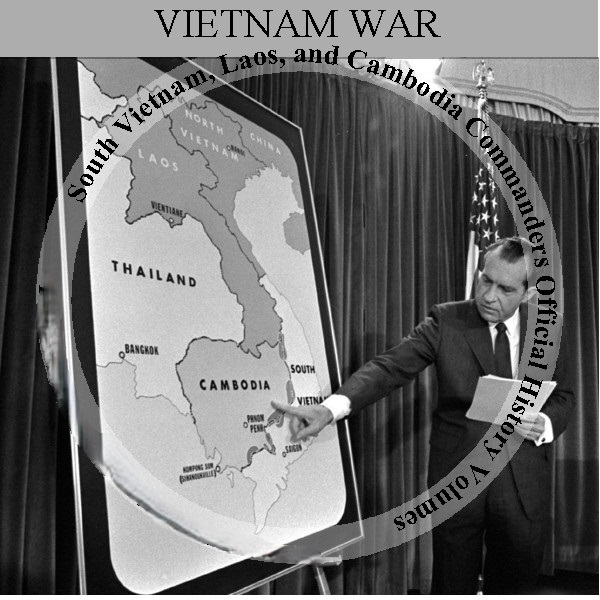
Vietnam War: South Vietnam, Laos, and Cambodia Official History Volumes
$19.50
Description
Vietnam War: Key Events and Actors
Detailed Timeline of Main Events (Based on Source Descriptions):
This timeline synthesizes information from the titles and descriptions of the provided monographs. It focuses on the periods and events explicitly mentioned or heavily implied within those descriptions.
Early Stages & Advisory Period (Pre-1965 & 1965 Onwards):
- Post-Geneva Accords (1954-1963): This period, mentioned in “Reflections on the Vietnam War,” involved the initial phase of nation-building in South Vietnam and the early stages of insurgency. It included the development of defense concepts, organization and training of the South Vietnamese military, and the implementation of counterinsurgency strategies and tactics.
- Increased US Advisory Role (Early 1960s – 1973): The monograph “U.S. Adviser” covers the extensive US advisory mission in South Vietnam. This mission spanned various fields, from tactical guidance at the battalion to corps level to specialized advice in intelligence, logistics, pacification, and training. This was a continuous effort throughout a significant portion of the war.
- Growing Involvement & Americanization (1964-1967): “Reflections on the Vietnam War” highlights this period as the “Americanization of the war,” marked by increased US military involvement, major operations, and focused efforts on pacification and rural development.
- Intelligence Activities (1965 – Final Days of RVN): “Intelligence” covers the organization, coordination, successes, and failures of intelligence operations during a broad period, from the escalation of US involvement to the fall of South Vietnam.
Major Turning Points & Operations:
- The General Offensives of 1968-1969 (Tet Offensive and subsequent phases): Colonel Hoang Ngoa Lung’s monograph focuses on all four periods of these offensives, analyzing the strategies of both North and South Vietnam, the performance of RVNAF and allied forces, and the impact on the conduct of the war.
- The Cambodian Incursion (April – June 1970 and beyond): Brig. Gen. Tran Dinh Tho’s work details the North Vietnamese use of Cambodian territory for logistics, the planning and execution of the combined US-South Vietnamese incursion, cooperation during the initial phase, and subsequent cross-border operations, as well as Khmer participation.
- Lam Son 719 (1971): Maj. Gen. Nguyen Duy Hinh provides a critical analysis of this operation, which involved a South Vietnamese incursion into Laos, from its planning to the withdrawal phase, highlighting the operational environment and lessons learned.
- The Easter Offensive of 1972: Lt. Gen. Ngo Quang Truong’s monograph examines this major North Vietnamese offensive, the RVNAF’s response in Quang Tri, Kontum, and An Loc, the counteroffensive, and the impact on Vietnamization.
Vietnamization and Withdrawal:
- Vietnamization (1968-1972): “Reflections on the Vietnam War” covers this period, during which the US aimed to transfer the responsibility for combat operations to the RVNAF. The 1972 Easter Offensive is highlighted as a critical test of Vietnamization.
- RVNAF and U.S. Operational Cooperation and Coordination (Throughout US Involvement): Lt. Gen. Ngo Quang Truong’s work analyzes the effectiveness of combined command and control efforts and attempts to improve RVNAF combat capabilities.
- Strategy and Tactics Evolution (Throughout the War, with emphasis on US withdrawal): Col. Hoang Ngoc Lung’s monograph traces the evolution of strategic approaches and tactics employed by both sides, with a particular focus on the period of American withdrawal and reduced support.
The Final Years and Collapse:
- Cease-Fire and its Violations (Post-1973): “Reflections on the Vietnam War” mentions this period as the “struggle for survival,” characterized by the cease-fire agreement and subsequent violations.
- Decline of US Support (Post-Cease-Fire): Colonel William E. Le Gro’s “Vietnam from Cease-Fire to Capitulation” highlights the diminishing US support after the cease-fire.
- South Vietnam’s Strategic Alternatives (Post-Cease-Fire): “Reflections on the Vietnam War” considers the options available to South Vietnam in the face of reduced US aid and continued aggression.
- Final Offensive and Collapse (1975): Stephen T. Hosmer, Konrad Kellen, and Brian Michael Jenkins’ report, “The Fall of South Vietnam,” summarizes the perceptions of former South Vietnamese leaders on the causes of the 1975 collapse. Colonel William E. Le Gro’s monograph also details the final North Vietnamese offensive, including events like the fall of Phuoc Long and the final acts in the North and South.
- Final Days of the Khmer Republic (January-April 1975): Lt. Gen. Sak Sut Sakhan’s “Khmer Republic at War and the Final Collapse” describes the closing months and ultimate fall of Cambodia.
Other Key Aspects and Regions:
- Pacification Efforts (Throughout US Involvement): Brig. Gen. Tran Dinh Tho’s “Pacification” defines and analyzes the broad and complex strategic concept of establishing government control and security in contested areas.
- Logistics of RVNAF (Throughout RVN Existence): Lt. Gen. Dong Van Khuyen’s “RVNAF Logistics” details the logistical organization, operations, improvement programs, and support for combat operations.
- Leadership in RVNAF (Throughout RVN Existence): General Cao Van Vien’s “Leadership” examines the unique demands and expectations placed on South Vietnamese military commanders across different political regimes (Diem, Directorate, Thieu).
- South Vietnamese Society (Throughout the War): Maj. Gen. Nguyen Duy Hinh and Brig. Gen. Tran Dinh Tho’s monograph explores the impact of South Vietnamese society on the war effort, the effects of US aid and presence, and significant social problems.
- Territorial Forces (Throughout RVN Existence): Lt. Gen. Ngo Quang Truong’s “Territorial Forces” evaluates the roles, development, training, employment, and effectiveness of regional and popular forces in countering communist insurgency.
- RLG Military Operations in the Laotian Panhandle (Period covered not explicitly stated): Brig. Gen. Soutchay Vongsavanh’s monograph analyzes Royal Lao Government military activities in the strategic Laotian Panhandle, its significance for the conflict in Vietnam and Cambodia, and lessons learned.
- The Royal Lao Army and US Advice/Support (Period covered not explicitly stated): Maj. Gen. Oudone Sananikone’s work covers the origins and evolution of the Royal Lao Army, the transition from the French to the American system, US advisory efforts, the impact of the 1973 cease-fire, and the army’s decline.
- Khmer Republic at War (1970-1975): Lt. Gen. Sak Sut Sakhan’s monograph covers the five years of conflict in Cambodia following the establishment of the Khmer Republic, including the political and military situation, major operations, and the final collapse.
Cast of Characters and Brief Bios:
This list includes the principal authors of the monographs, as they represent the key perspectives offered by the sources.
- General Cao Van Vien: A high-ranking General in the Army of the Republic of Vietnam (ARVN). He held significant command positions throughout the war and fled South Vietnam in 1975. He co-authored “U.S. Adviser,” “Leadership,” and “Reflections on the Vietnam War,” providing insights into various aspects of the war from the South Vietnamese perspective, including leadership challenges and the overall trajectory of the conflict.
- Lt. Gen. Ngo Quang Truong: A prominent Lieutenant General in the ARVN, known for his command abilities, particularly during the defense against the 1972 Easter Offensive. He fled South Vietnam in 1975. He co-authored “U.S. Adviser,” and authored “The Easter Offensive of 1972,” “RVNAF and U.S. Operational Cooperation and Coordination,” and “Territorial Forces,” offering valuable perspectives on major battles, combined operations, and the role of territorial defense.
- Lt. Gen. Dong Van Khuyen: A Lieutenant General in the ARVN who likely held a key role in logistics and planning. He fled South Vietnam in 1975. He co-authored “U.S. Adviser” and “Reflections on the Vietnam War,” and authored “RVNAF Logistics,” providing expertise on the critical logistical challenges faced by the South Vietnamese military.
- Maj. Gen. Nguyen Duy Hinh: A Major General in the ARVN who fled South Vietnam in 1975. He co-authored “U.S. Adviser” and “The South Vietnamese Society,” and authored “Lam Son 719,” offering insights into specific military operations and the broader social context of the war.
- Brig. Gen. Tran Dinh Tho: A Brigadier General in the ARVN who fled South Vietnam in 1975. He co-authored “U.S. Adviser” and “The South Vietnamese Society,” and authored “Pacification” and “The Cambodian Incursion,” providing perspectives on key strategic concepts and significant cross-border operations.
- Col. Hoang Ngoc Lung: A Colonel in the ARVN who fled South Vietnam in 1975. He co-authored “U.S. Adviser” and authored “The General Offensives of 1968-69,” “Intelligence,” and “Strategy and Tactics,” offering detailed analyses of major offensives, intelligence operations, and the evolving military strategies of both sides.
- Lt. Col. Chu Xuan Vien: A Lieutenant Colonel in the ARVN who co-authored “U.S. Adviser,” contributing to the understanding of the US advisory role.
- Stephen T. Hosmer, Konrad Kellen, Brian Michael Jenkins: Researchers who prepared the report “The Fall of South Vietnam,” summarizing the statements of high-ranking South Vietnamese military and civilian leaders on the reasons for the collapse in 1975. Their work synthesizes the perspectives of numerous individuals.
- Lt. Gen. Sak Sut Sakhan: A Lieutenant General in the armed forces of the Khmer Republic (Cambodia) who fled Southeast Asia in 1975. He authored “Khmer Republic at War and the Final Collapse,” providing the Cambodian perspective on the conflict in Cambodia and its final days.
- Brig. Gen. Soutchay Vongsavanh: A Brigadier General in the Royal Lao Government military who fled Southeast Asia in 1975. He authored “RLG Military Operations and Activities in the Laotian Panhandle,” offering insights into the military situation in Laos and its connection to the wider Indochina War.
- Maj. Gen. Oudone Sananikone: A Major General in the Royal Lao Army who fled Southeast Asia in 1975. He authored “The Royal Lao Army and U.S. Army Advice and Support,” detailing the development and eventual decline of the Lao military and the role of US assistance.
- Colonel William E. Le Gro: Likely a US Army Colonel, author of “Vietnam from Cease-Fire to Capitulation,” providing an analysis of the final years of the war from a perspective observing the decline of US support and the eventual South Vietnamese collapse. He also supervised the creation of these monographs as part of the General Research Corporation.
Vietnam War: South Vietnam, Laos, and Cambodia Official History Volumes
3,887 pages,19 volumes, of Vietnam War South Vietnamese, Laotian, and Cambodian commander official history.
These nineteen volumes were completed between 1979 and 1981. The authors of the monographs were prominent leaders of the former armed forces of South Vietnam, Laos, and Cambodia who fled Southeast Asia in 1975. They give an interesting look from “the other side of the hill.” These monographs were created under the supervision of General William E. Potts and the staff of the General Research Corporation (GRC) of McLean, Virginia, a private research firm. These officers prepared monographs based on a contract between GRC and the U.S. Army.
The monographs were not edited or altered and reflect the views of their authors, not necessarily those of the U.S. Army or the Department of Defense. In some cases, the authors attempted to present definitive histories of particular areas of interests based on records made available to them. Other times the authors were not attempting to write definitive accounts but attempted to set down how they viewed the war in South-East Asia. There are enough personal commentaries within each of the studies to make them extremely valuable.
The volumes include:
U.S. Adviser
by General Cao Van Vien, Lt. Gen. Ngo Quang Truong, Lt. Gen. Dong Van Khuyen, Maj. Gen. Nguyen Duy Hinh, Brig. Gen. Tran Dinh Tho, Col. Hoang Ngoc Lung, and Lt. Col. Chu Xuan Vien
The United States advisory mission in South Vietnam encompassed many fields of endeavor and affected almost every level of the Republic of Vietnam Armed Forces. The authors describe a demanding exercise of professional duties and a unique human experience for the American adviser who had not only to struggle with problems of environment and culture differences and face the complexities and hazards of the war, but also devote his time and energy to supplement United States involvement in Vietnam with US Army professionalism. The total effort by US advisers contributed directly and immeasurably to the development and modernization of the Vietnamese Armed Forces. Topics include: the JGS and MACV (Joint General Staff and Military Assistance Command, Vietnam); ARVN battalion to corps and the tactical adviser; the intelligence adviser; the logistic and technical adviser; the pacification adviser; and the training adviser.
The Fall of South Vietnam: Statements by Vietnamese Military and Civilian Leaders
by Stephen T. Hosmer; Konrad Kellen; Brian Michael Jenkins
A Report prepared for Historian, Office of the Secretary Of Defense. This report is a summary of extensive oral and written statements by twenty-seven former high-ranking South Vietnamese military officers and civilians on their perceptions of the causes of the collapse of South Vietnam in 1975.
The General Offensives of 1968-69
by Colonel Hoang Ngoa Lung
Much has been written about North Vietnam’s and communist Vietnam force’s 1968 Tet Offensive, a major event in the Vietnam War. However, most publications on this subject, including books and press accounts of the Western world and South Vietnam’s own official military history records, focused primarily on the spectacular aspect of battles fought during early 1968.
This monograph analyzes and compares all four periods of offensive activities which lasted well into 1969. Seeking to present the Vietnamese point of view, it assesses North and South strategies, the reactions and combat performance of the RVNAF and Free World Military Assistance Forces, and the impact of the offensive on the conduct of the war with regard to North Vietnam, South Vietnam, and the United States.
Colonel Hoang Ngoa Lung drew heavily on his personal experience and recollections. Interviews with involved principals and a review of documentation also helped his search for credibility of facts and depth of insight. The most valuable data came from the personal files of Lieutenant General William E. Potts.
Pacification
by Brig. Gen. Tran Dinh Tho
The U.S. military’s definition of pacification was the military, political, economic, and social process of establishing or reestablishing local government responsive to and involving the participation of the people. It included the provision of sustained, credible territorial security, the destruction of the opposition’s underground government, the assertion or re-assertion of political control and involvement of the people in government, and the initiation of economic and social activity capable of self-sustenance and expansion. Defined as such, pacification was a broad and complex strategic concept which encompasses many fields of national endeavor. As a program implemented jointly with the U.S. military effort in South Vietnam, pacification appears to have involved every American serviceman and civilian who served there, many of whom indeed participated in conceiving the idea and helping put it to work.
Intelligence
by Col. Hoang Ngoc Lung
The purpose of this monograph is to record all the facts concerning intelligence activities, its organizations and coordination procedures, its successes and failures during the period from 1965 to the final days of the Republic of Vietnam.
The Cambodian Incursion
by Brig. Gen. Tran Dinh Tho
This monograph addresses the North Vietnamese use of Cambodian territory and organization for logistic support. There are also sections on planning the combined incursion and early cross-border operations, the combined incursion, cooperation and coordination from 30 April to 30 June 1970, cross-border operations after 30 June 1970, Khmer participation, and observations/lessons learned.
Lam Son 719
by Maj. Gen. Nguyen Duy Hinh
This monograph presents a critical analysis of all aspects of LAM SON 719 from the planning stage to the withdrawal from lower Laos. The document highlights the operational environment, planning, offensive, withdrawal phases, and critical analysis.
The Easter Offensive of 1972
by Lt. Gen. Ngo Quang Truong
The Easter Offensive of 1972 was one of North Vietnam’s most significant initiatives during the Vietnam War. This all-out effort involved eventually in excess of ten divisions on each side and affected the lives of well over a million South Vietnamese people. During the eight long months of fierce fighting, the Republic of Vietnam Armed Forces put Vietnamization to a severe test. Topics include the invasion of Quang Tri, stabilization and counteroffensive, defending Kontum, the siege of An Loc, opposition offensive in the Mekong Delta, and a critical analysis.
Leadership
by General Cao Van Vien
Unlike his counterpart in some countries, the Vietnamese military commander was not simply a leader of men in combat. Depending on the level of command, he had to play his part in national politics, be himself a grass roots politician, or engage in political warfare. To achieve success, he was often expected to possess several qualities not always required of a professional military leader. The requirements of leadership, therefore, sometimes transcended the conventional framework of accepted rules and principles. Chapters include information on leadership under President Diem’s regime, leadership during the period of the directorate, and leadership during President Thieu’s era.
Strategy and Tactics
by Col. Hoang Ngoc Lung
During the Vietnam War, the Republic of Vietnam and the United States pursued a common goal; their armed forces fought against the same enemy, under the same campaign plan, with the same weapon systems, and in the same environment. The strategic approaches to fighting this war, however, evolved through several stages depending on the opposition’s kind of warfare and force structure; so did the tactics designed to counter large-unit and guerrilla activities. This monograph attempts to trace back and evaluate the strategic alternatives at each stage of the war and the evolving tactics employed, with particular emphasis on the period of American withdrawal and reduced support. It details early strategies, strategy during the period of U.S. participation, United States influence on Republic of Vietnam’s strategy, the tactics of the Republic of Vietnam Armed Forces, special U.S. combat techniques, and strategies and tactics of North Vietnam.
Khmer Republic at War and the Final Collapse
by Lt. Gen. Sak Sut Sakhan
Cambodia or the Khmer Republic as it was called from 1970 to 1975 was immersed for five years in the conflict known in that region as the Indochina War. This monograph seeks to put these events into better perspective and to make clearer the Khmer point of view. Sections describe information about Cambodia and the communists, the armed forces of the Khmer Republic, the first two years of the war, the politico/military situation in Cambodia (1972-1974), major military operations (1972 through 1974), closing months (January-April 1975), and the final days of the Khmer Republic.
The South Vietnamese Society
by Maj. Gen. Nguyen Duy Hinh and Brig. Gen. Tran Dinh Tho
To evaluate the effect that South Vietnamese society had on the conduct of the war, this monograph seeks to present the Vietnamese point of view on the joint U.S.-RVN efforts to build South Vietnam, the impact of U.S. aid and the American presence on the South Vietnamese society, the most significant social problems that South Vietnam faced during and as a result of the war, and finally the viability of the U.S.-supported regime and its leadership.
Reflections on the Vietnam War
by General Cao Van Vien and Lt. Gen. Dong Van Khuyen
This document addresses nation-building and insurgency from 1954-1963 (concept of defense, organization and training, counterinsurgency strategies and tactics, etc.), Americanization of the war, 1964-1967 (pacification and rural developments, major operations, etc.), Vietnamization 1968-1972 (the 1972 Easter offensive, general mobilization, etc.), and the struggle for survival 1973-1975 (cease-fire and violations, South Vietnam’s strategic alternatives, significant lessons learned, etc.).
RVNAF and U.S. Operational Cooperation and Coordination
by Lt. Gen. Ngo Quang Truong
This monograph analyzes the problem areas of operational cooperation and coordination, conceived both as a command and control device to prosecute the common war effort and as a means to improve the combat effectiveness of the RVNAF. It also attempts to evaluate the successes and failures of this combined effort.
RLG Military Operations and Activities in the Laotian Panhandle
by Brig. Gen. Soutchay Vongsavanh
This monograph reviews and analyzes Royal Lao government military operations and activities in the Laotian panhandle. Special attention is given to the significance of the panhandle for opposition military operations in South Vietnam and Cambodia, the initiation of conventional warfare in southern Laos, lessons learned during the employment of regular and irregular forces, and developments following the 1973 cease-fire.
The Royal Lao Army and U.S. Amy Advice and Support
by Maj. Gen. Oudone Sananikone
This monograph presents significant events concerning the origins of the Royal Lao Army: the transition from the French system to the American system of military logistics, training, administration and operations; the evolution of United States Army advice and support to include accomplishments and problems; the impact of the 1973 cease-fire; the decline of the Royal Lao Army; and the final days as the communists gained control.
Territorial Forces
by Lt. Gen. Ngo Quang Truong
To evaluate the performance of the Territorial Forces, this monograph seeks to present the Vietnamese point of view on their roles and missions, development, training, employment, and support as they evolved during the war. More emphatically, it also attempts to analyze their problems and to determine if, in their actual condition, the Territorial Forces were effective enough as antithesis to Communist insurgency warfare. Chapters include information on South Vietnam’s organization for territorial defense, the regional and popular forces, the para-military forces, RF-PF (Regional and Popular Forces) employment and performance, efforts to improve RF and PF combat effectiveness, and observations.
RVNAF Logistics
by Lt. Gen. Dong Van Khuyen
The monograph discusses logistical organization and operation, logistics improvement programs, supply and maintenance improvement program, support activities and base transfer, logistic support for combat operations, post-cease-fire logistic structure, improving supply and maintenance management, ammunition support, service support (transportation and medical), construction, and financial and budget management.
Vietnam from Cease-Fire to Capitulation
by Colonel William E. Le Gro
An examination of significant military developments and social and economic conditions during the last three years of the war. This document is a story of the final Indochina struggle and eventual collapse of the South Vietnamese (Vietnam War timeframe). Chapters include information on U.S. organization for a cease-fire, decline of U.S. support, strategic raids, the last Christmas (Phuoc Long), the final offensive in the north, the last act in the south, and a section on an inevitable defeat
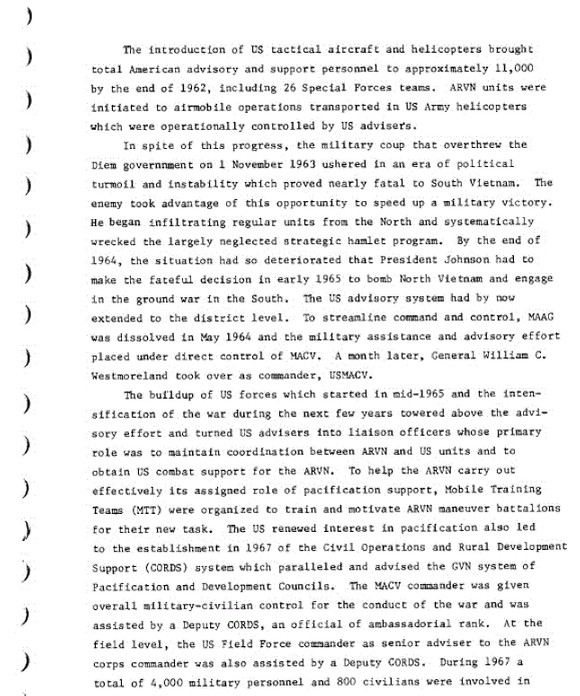
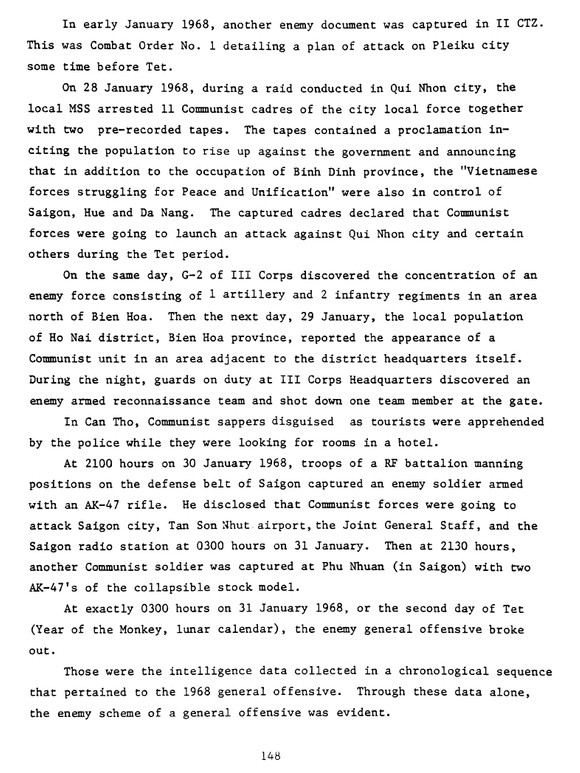
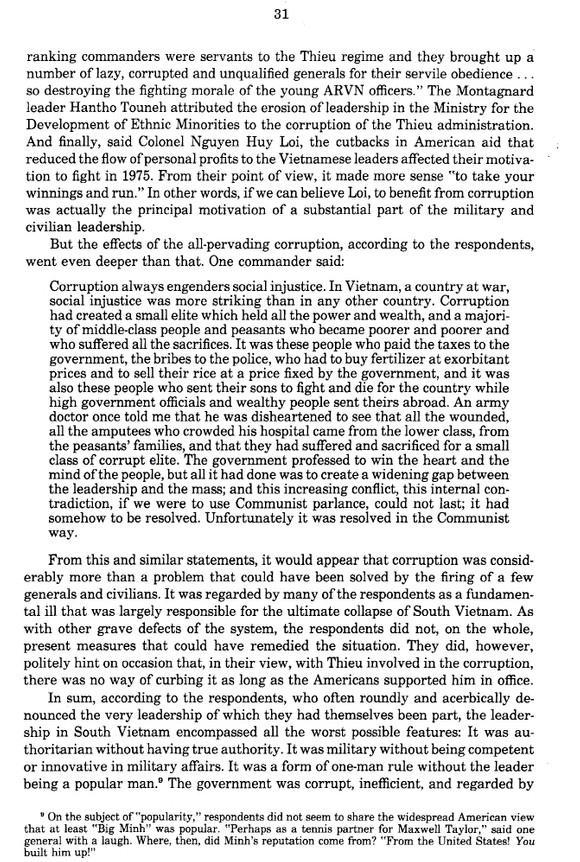
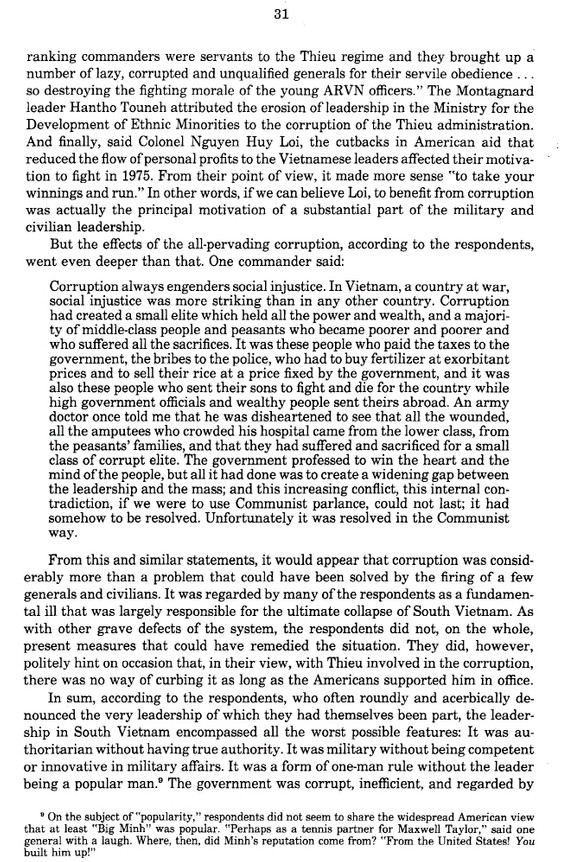
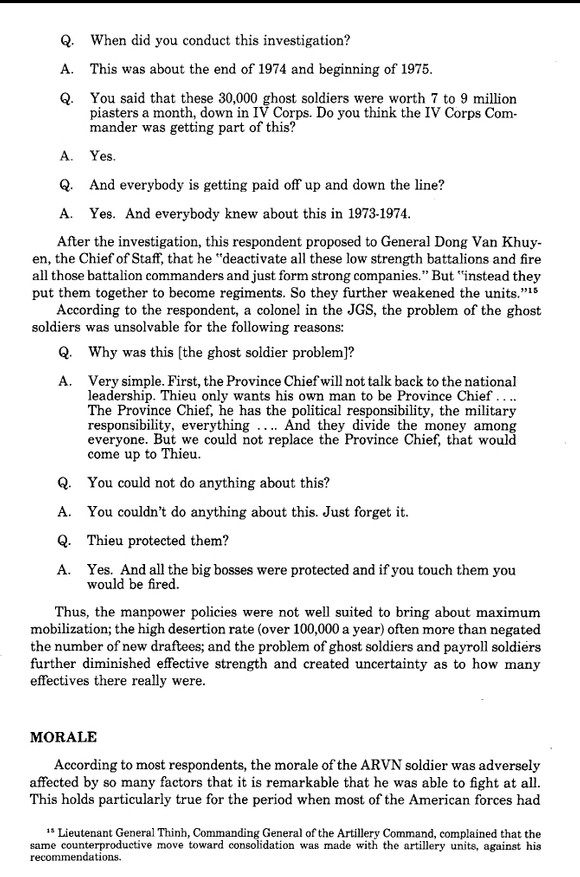

Related products
-
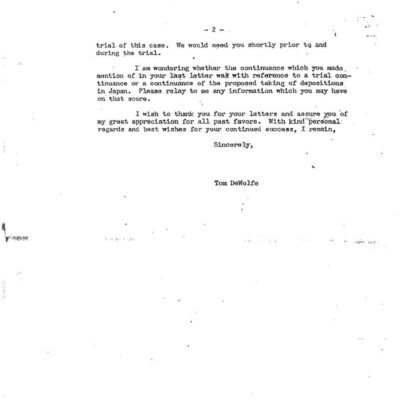
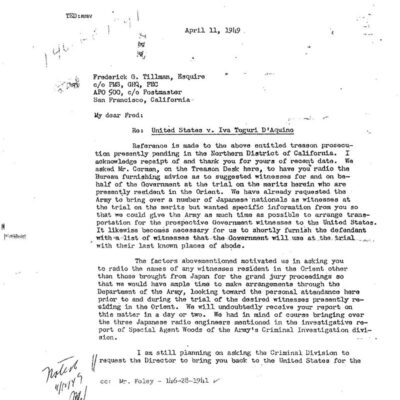
Tokyo Rose: Department of Justice Prosecution Files
$19.50 Add to Cart -
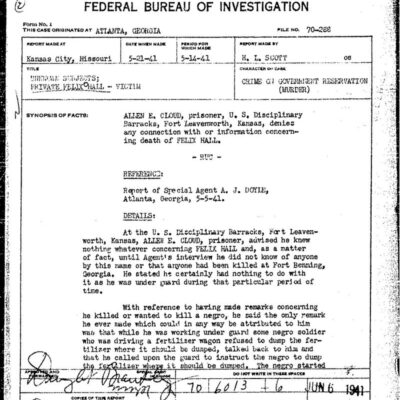
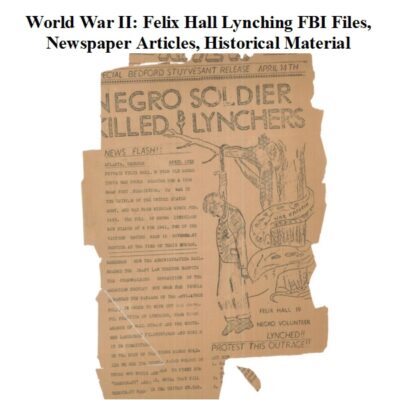
World War II: Felix Hall Lynching – FBI Files, Articles, Historical Records
$9.99 Add to Cart -
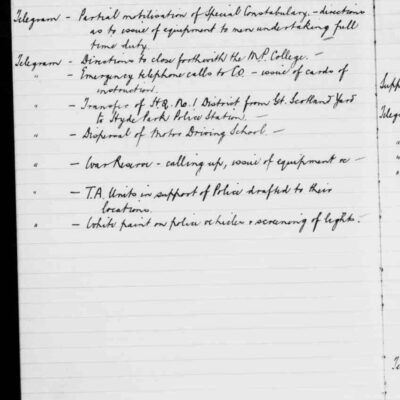
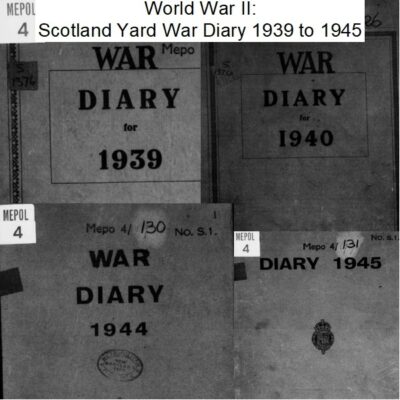
World War II: Scotland Yard War Diary from 1939 to 1945
$3.94 Add to Cart -
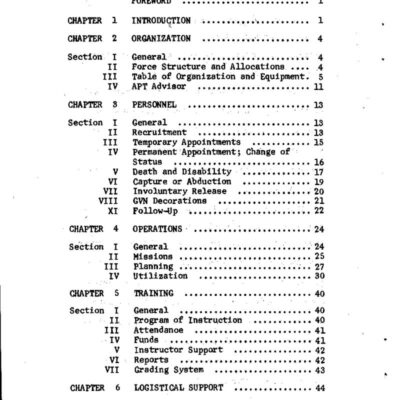
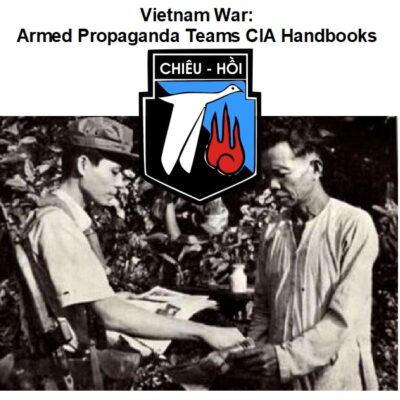
Vietnam War: Armed Propaganda Teams CIA Handbooks
$1.99 Add to Cart